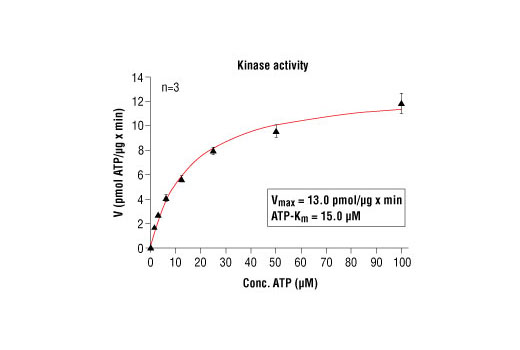| Gene Symbol |
AURKC
|
| Entrez Gene |
6795
|
| Alt Symbol |
AIE2, AIK3, ARK3, AurC, SPGF5, STK13, aurora-C
|
| Species |
Human
|
| Gene Type |
protein-coding
|
| Description |
aurora kinase C
|
| Other Description |
ARK-3|aurora 3|aurora-related kinase 3|aurora/IPL1-related kinase 3|aurora/IPL1/EG2 protein 2|serine/threonine kinase 13 (aurora/IPL1-like)|serine/threonine-protein kinase 13|serine/threonine-protein kinase aurora-C
|
| Swissprots |
Q9UPK5 Q6DLZ0 O75442 Q9UQB9 Q6AZY8 O60681
|
| Accessions |
EAW72485 EAW72486 Q9UQB9 AB017332 BAA76292 AF054621 AAC25955 AF059681 AAC77369 AK301886 BAG63318 AY661554 AAT64422 AY714054 AAU04399 BC075064 AAH75064 BX092186 EU668345 ACF94498 XR_430209 NM_001015878 NP_001015878 NM_001015879 NP_001015879 NM_003160 NP_003151
|
| Function |
Serine/threonine-protein kinase component of the chromosomal passenger complex (CPC), a complex that acts as a key regulator of mitosis. The CPC complex has essential functions at the centromere in ensuring correct chromosome alignment and segregation and is required for chromatin-induced microtubule stabilization and spindle assembly. Plays also a role in meiosis and more particularly in spermatogenesis. Has redundant cellular functions with AURKB and can rescue an AURKB knockdown. Like AURKB, AURKC phosphorylates histone H3 at 'Ser-10' and 'Ser-28'. Phosphorylates TACC1, another protein involved in cell division, at 'Ser-228'. {ECO:0000269|PubMed:15316025, ECO:0000269|PubMed:15499654, ECO:0000269|PubMed:15670791, ECO:0000269|PubMed:15938719, ECO:0000269|PubMed:21493633, ECO:0000269|PubMed:21531210}.
|
| Subcellular Location |
Nucleus. Chromosome. Chromosome, centromere. Cytoplasm, cytoskeleton, spindle. Note=Distributes in the condensed chromosomes during prophase to metaphase. After entering anaphase, there is a dissociation from separated chromosomes and a redistribution to midzone microtubules, and finally remains in the midbody during cytokinesis.
|
| Tissue Specificity |
Isoform 1 and isoform 2 are expressed in testis. Elevated expression levels were seen only in a subset of cancer cell lines such as Hep-G2, Huh-7 and HeLa. Expression is maximum at M phase. {ECO:0000269|PubMed:15670791}.
|
